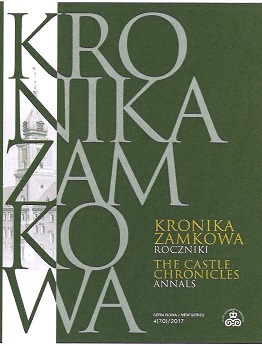Perskie tkaniny z herbem Wazów (próba podsumowania).
Persian Tapestries with Vasa coat of arms (an attempt at a summary)
Author(s): Katarzyna PołujanSubject(s): Fine Arts / Performing Arts, History of Art
Published by: Arx Regia® Wydawnictwo Zamku Królewskiego w Warszawie – Muzeum
Keywords: Zygmunt III; Sefer Muratowicz; Prince Władysław Vasa’s European tour; Anna Katarina Konstantia Vasa; textile bearing the Vasa coat of arms; Safavidian silk tapestries
Summary/Abstract: This article discusses existing Persian tapestries bearing the Vasa coat of arms which were commissioned by King Zygmunt III, through the intermediary of Sefer Muratowicz, in Kāshān in 1601; they form a distinct group among Safavidian textiles. The article contains a comprehensive study of all the publications to date relating to these textiles. The techniques used, the compositions, decorative motifs, as well as the colours used, have all been accurately described. The surviving tapestries currently form part of three collections: two of these are in Munich—they came into the Wittelsbach family collection in 1642, as part of the dowry of Anna Katarina Konstantia Vasa, wife of Philipp Wilhelm, future Elector Palatine of the Rhine. One is housed in the Palazzo del Quirinale in Rome—it was originally in the Medici family collections, and is recorded in 1625 in the inventory (its appearance there may be related to Władysław Vasa’s European tour during which he visited Florence at the turn of 1624/1625). A fourth collection, of unknown provenance, and only partially preserved, is housed in the Textile Museum in Washington D.C. These tapestries, which are important examples of high-class Safavidian textile art, have become very important for scholars of Eastern art; furthermore, thanks to the surviving archives, it has been possible to date them accurately. Two of them— from the collections in Munich—were publicly displayed for the first time at an exhibition of Persian Art held in Munich in 1910; this was an unprecedented event at that time and one which was of great significance for, inter alia, the study of the history of oriental textiles.
Journal: Kronika Zamkowa. Roczniki
- Issue Year: 4/2017
- Issue No: 4
- Page Range: 47-61
- Page Count: 15
- Language: Polish

